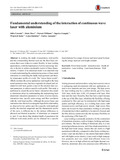JavaScript is disabled for your browser. Some features of this site may not work without it.
| dc.contributor.author | Coroado, Júlio | |
| dc.contributor.author | Meco, Sonia | |
| dc.contributor.author | Williams, Stewart W. | |
| dc.contributor.author | Ganguly, Supriyo | |
| dc.contributor.author | Suder, Wojciech | |
| dc.contributor.author | Quintino, Luísa | |
| dc.contributor.author | Assunção, Eurico | |
| dc.date.accessioned | 2017-08-30T15:16:41Z | |
| dc.date.available | 2017-08-30T15:16:41Z | |
| dc.date.issued | 2017-07-13 | |
| dc.identifier.citation | Coroado J, Meco S, Williams S, et al., (2017) Fundamental understanding of the interaction of continuous wave laser with aluminium. International Journal of Advanced Manufacturing Technology, December 2017, Volume 93, Issue 9–12, pp. 3165–3174 | en_UK |
| dc.identifier.issn | 0268-3768 | |
| dc.identifier.uri | http://dx.doi.org/10.1007/s00170-017-0702-6 | |
| dc.identifier.uri | https://dspace.lib.cranfield.ac.uk/handle/1826/12407 | |
| dc.description.abstract | In welding, the depth of penetration, weld profile and the corresponding thermal cycle are the three basic outcomes that a user wishes to control flexibly. In laser welding applications, controlled application of power and energy density is the key to achieve predictable control of these characteristics. Creation of an analytical model is an important step towards understanding the underpinning science of laser metal interaction in controlling the depth, bead geometry and thereby temperature profile of a weld. The “power factor model”, which correlates the power applied per unit length to the laser metal interaction time, has been originally developed and validated for mild steel, guides a user on the selection laser system parameters, to achieve specific weld profile. This study is performed to extend the power factor–interaction time model to aluminium alloys by understanding the underpinning laser aluminium interaction parameters in terms of power density, interaction time, specific point energy and their correlation with the weld bead profiles. Although the power factor and interaction time showed a rectangular hyperbolic relationship, as observed in low carbon steel, for a specific weld depth and profile, the absolute magnitude and the characteristic profile of the curve is different due to the intrinsic differences in physical and thermal properties of aluminium as compared to steel. It was shown that identical depth of penetration but different weld metal profile can be obtained for a specific beam diameter for a range of power and travel speed by keeping the energy input per unit length constant. | en_UK |
| dc.language.iso | en | en_UK |
| dc.publisher | Springer | en_UK |
| dc.rights | Attribution 4.0 International (CC BY 4.0) | |
| dc.rights.uri | http://creativecommons.org/licenses/by/4.0/ | |
| dc.subject | Power factor model | en_UK |
| dc.subject | Interaction time | en_UK |
| dc.subject | Depth of penetration | en_UK |
| dc.subject | Laser welding | en_UK |
| dc.subject | Laser beam diameter | en_UK |
| dc.subject | Weld width | en_UK |
| dc.title | Fundamental understanding of the interaction of continuous wave laser with aluminium | en_UK |
| dc.type | Article | en_UK |
| dc.identifier.cris | 18081125 |
Files in this item
This item appears in the following Collection(s)
-
Staff publications (SATM) [4365]

